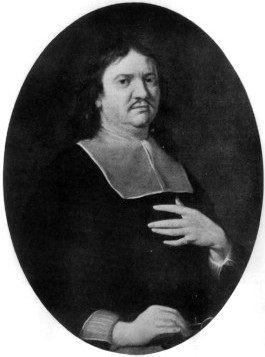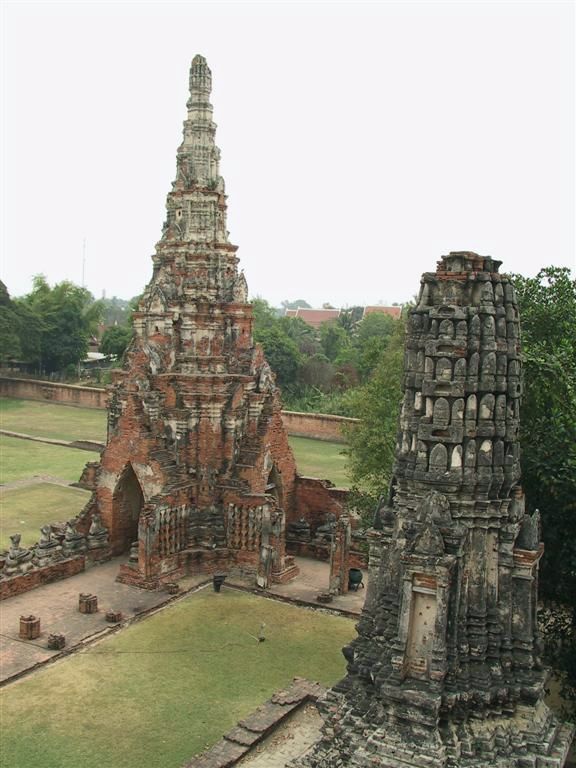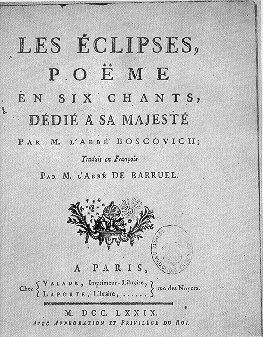|
Christopher Maire
Christopher Maire (1697–1767) was an English Jesuit and writer on astronomy. Life The son of Christopher Maire of Hartbushes, County Durham and his wife Frances Ingleby of Lawkland, Yorkshire, he was born on 6 March 1697, and studied humanities at St Omer College. He entered the Society of Jesus 7 September 1715, at Watten, and was professed of the four vows 2 February 1733. After a course of teaching at St Omer, and professing philosophy and theology at Liège, he was declared rector of the English College at Rome in the autumn of 1744, and he held that post until 1750. He returned to St Omer in March 1757; and died at Ghent on 22 February 1767. Works Maire's works are: * ''Tractatus Theologicus de Sanctissima Trinitate'', 1737, manuscript left in the library of the University of Liège. * ''Observationes Cometæ ineunte anno mdccxliv in Collegio Anglicano Romæ habitæ, et cum theoria Newtoniana comparatæ'', Rome, 1744. A translation into Italian also appeared. * ''Observat ... [...More Info...] [...Related Items...] OR: [Wikipedia] [Google] [Baidu] |
Jesuit
, image = Ihs-logo.svg , image_size = 175px , caption = ChristogramOfficial seal of the Jesuits , abbreviation = SJ , nickname = Jesuits , formation = , founders = , founding_location = , type = Order of clerics regular of pontifical right (for men) , headquarters = Generalate:Borgo S. Spirito 4, 00195 Roma-Prati, Italy , coords = , region_served = Worldwide , num_members = 14,839 members (includes 10,721 priests) as of 2020 , leader_title = Motto , leader_name = la, Ad Majorem Dei GloriamEnglish: ''For the Greater Glory of God'' , leader_title2 = Superior General , leader_name2 = Fr. Arturo Sosa, SJ , leader_title3 = Patron saints , leader_name3 = , leader_title4 = Ministry , leader_name4 = Missionary, educational, literary works , main_organ = La Civiltà Cattolica ... [...More Info...] [...Related Items...] OR: [Wikipedia] [Google] [Baidu] |
Philosophical Transactions
''Philosophical Transactions of the Royal Society'' is a scientific journal published by the Royal Society. In its earliest days, it was a private venture of the Royal Society's secretary. It was established in 1665, making it the first journal in the world exclusively devoted to science, and therefore also the world's longest-running scientific journal. It became an official society publication in 1752. The use of the word ''philosophical'' in the title refers to natural philosophy, which was the equivalent of what would now be generally called ''science''. Current publication In 1887 the journal expanded and divided into two separate publications, one serving the physical sciences ('' Philosophical Transactions of the Royal Society A: Mathematical, Physical and Engineering Sciences'') and the other focusing on the life sciences ('' Philosophical Transactions of the Royal Society B: Biological Sciences''). Both journals now publish themed issues and issues resulting from pap ... [...More Info...] [...Related Items...] OR: [Wikipedia] [Google] [Baidu] |
18th-century English Jesuits
The 18th century lasted from January 1, 1701 (Roman numerals, MDCCI) to December 31, 1800 (Roman numerals, MDCCC). During the 18th century, elements of Age of Enlightenment, Enlightenment thinking culminated in the American Revolution, American, French Revolution, French, and Haitian Revolution, Haitian Revolutions. During the century, History of slavery, slave trading and human trafficking expanded across the shores of the Atlantic Ocean, Atlantic, while declining in Russian Empire, Russia, Qing dynasty, China, and Joseon, Korea. Revolutions began to challenge the legitimacy of monarchical and aristocratic power structures, including the structures and beliefs that Proslavery, supported slavery. The Industrial Revolution began during mid-century, leading to radical changes in Society, human society and the Natural environment, environment. Western historians have occasionally defined the 18th century otherwise for the purposes of their work. For example, the "short" 18th cen ... [...More Info...] [...Related Items...] OR: [Wikipedia] [Google] [Baidu] |
1767 Deaths
Events January–March * January 1 – The first annual volume of ''The Nautical Almanac and Astronomical Ephemeris'', produced by British Astronomer Royal Nevil Maskelyne at the Royal Observatory, Greenwich, gives navigators the means to find longitude at sea, using tables of lunar distance (navigation), lunar distance. * January 9 – William Tryon, governor of the Royal Colony of North Carolina, signs a contract with architect John Hawks (architect), John Hawks to build Tryon Palace, a lavish Georgian architecture, Georgian style governor's mansion on the New Bern waterfront. * February 16 – On orders from head of state Pasquale Paoli of the newly independent Corsican Republic, Republic of Corsica, a contingent of about 200 Corsican soldiers begins an invasion of the small island of Capraia off of the coast of northern Italy and territory of the Republic of Genoa. By May 31, the island is conquered as its defenders surrender.George Renwick, ''Romantic ... [...More Info...] [...Related Items...] OR: [Wikipedia] [Google] [Baidu] |
1697 Births
Events January–March * January 8 – Thomas Aikenhead is hanged outside Edinburgh, becoming the last person in Great Britain to be executed for blasphemy. * January 11 – French writer Charles Perrault releases the book ''Histoires ou contes du temps passé'' (literally "Tales of Past Times", known in England as "Mother Goose tales") in Paris, a collection of popular fairy tales, including ''Cinderella'', ''Puss in Boots'', ''Red Riding Hood'', ''The Sleeping Beauty'' and ''Bluebeard''. * February 8 – The English infantry regiment of Arthur Chichester, 3rd Earl of Donegall is disbanded four years after it was first raised. * February 22 – Gerrit de Heere becomes the new Governor of Dutch Ceylon, succeeding Thomas van Rhee and administering the colony for almost six years until his death. * February 26 – Conquistador Martín de Ursúa y Arizmendi and 114 soldiers arrive at Lake Petén Itzá in what is now Guatemala and begin the Spanish conquest of Guatemala with a ... [...More Info...] [...Related Items...] OR: [Wikipedia] [Google] [Baidu] |
St Paul's Cathedral
St Paul's Cathedral is an Anglican cathedral in London and is the seat of the Bishop of London. The cathedral serves as the mother church of the Diocese of London. It is on Ludgate Hill at the highest point of the City of London and is a Grade I listed building. Its dedication to Paul the Apostle dates back to the original church on this site, founded in AD 604. The present structure, dating from the late 17th century, was designed in the English Baroque style by Sir Christopher Wren. Its construction, completed in Wren's lifetime, was part of a major rebuilding programme in the city after the Great Fire of London. The earlier Gothic cathedral (Old St Paul's Cathedral), largely destroyed in the Great Fire, was a central focus for medieval and early modern London, including Paul's walk and St Paul's Churchyard, being the site of St Paul's Cross. The cathedral is one of the most famous and recognisable sights of London. Its dome, surrounded by the spires of Wren's City chur ... [...More Info...] [...Related Items...] OR: [Wikipedia] [Google] [Baidu] |
Alban Butler
Alban Butler (13 October 171015 May 1773) was an English Roman Catholic priest and hagiographer. Biography Alban Butler was born in 1710, at Appletree, Aston le Walls, Northamptonshire, the second son of Simon Butler, Esq. His father died when he was young and he was sent to the Lancashire boarding school ran by Dame Alice. He went on to a Catholic further education at the English College, Douai, in France. In 1735 Butler was ordained a priest. At Douai, he was appointed professor of philosophy, and later professor of theology. It was at Douai that he began his principal work ''The Lives of the Fathers, Martyrs and Other Principal Saints''. He also prepared material for Richard Challoner's ''Memoirs of Missionary Priests'', a work on the martyrs of the reign of Elizabeth. In 1745, Butler came to the attention of the Duke of Cumberland, younger son of King George II, for his devotion to the wounded English soldiers during the defeat at the Battle of Fontenoy. Around 1746, Butle ... [...More Info...] [...Related Items...] OR: [Wikipedia] [Google] [Baidu] |
Stanislaus Wydra
Stanislav Vydra (13 November 1741 in Hradec Králové – 2 December 1804 in Prague) was a Bohemian Jesuit priest, writer, and mathematician. Life Vydra entered the Jesuit novitiate of Hradec Králové in 1757. After two years in Brno, he studied philosophy and mathematics from 1762 to 1764 at Charles University. His teachers included Joseph Stepling and Jan Tesánek. In 1765, he went as a teacher to Jičín and became Stepling's assistant a year later. He ministered as parish priest in Vilémov from 1771 to 1772. In 1772, Vydra was appointed professor of mathematics in Charles University in Prague. Here he taught until 1773. From 1789 to 1799, he was appointed to the mathematics faculty and served as dean of the Faculty of Arts. He became the rector of the university in 1800. He went blind in 1803 and died one year later. He is buried in Prague at the Olšany Cemetery in Prague. Teachings Stanislav Vydra taught elementary mathematics, a compulsory subject for the students at t ... [...More Info...] [...Related Items...] OR: [Wikipedia] [Google] [Baidu] |
Papal States
The Papal States ( ; it, Stato Pontificio, ), officially the State of the Church ( it, Stato della Chiesa, ; la, Status Ecclesiasticus;), were a series of territories in the Italian Peninsula under the direct sovereign rule of the pope from 756 until 1870. They were among the major states of Italy from the 8th century until the unification of Italy, between 1859 and 1870. The state had its origins in the rise of Christianity throughout Italy, and with it the rising influence of the Christian Church. By the mid-8th century, with the decline of the Byzantine Empire in Italy, the Papacy became effectively sovereign. Several Christian rulers, including the Frankish kings Charlemagne and Pepin the Short, further donated lands to be governed by the Church. During the Renaissance, the papal territory expanded greatly and the pope became one of Italy's most important secular rulers as well as the head of the Church. At their zenith, the Papal States covered most of the modern Ital ... [...More Info...] [...Related Items...] OR: [Wikipedia] [Google] [Baidu] |
Roger Boscovich
Roger Joseph Boscovich ( hr, Ruđer Josip Bošković; ; it, Ruggiero Giuseppe Boscovich; la, Rogerius (Iosephus) Boscovicius; sr, Руђер Јосип Бошковић; 18 May 1711 – 13 February 1787) was a physicist, astronomer, mathematician, philosopher, diplomat, poet, theologian, Jesuit priest, and a polymath from the Republic of Ragusa.Biography: Roger Joseph Boscovich, S.J. Fairchild University website. He studied and lived in Italy and France where he also published many of his works. Boscovich produced a precursor of and made many contributions to |
Pope Benedict XIV
Pope Benedict XIV ( la, Benedictus XIV; it, Benedetto XIV; 31 March 1675 – 3 May 1758), born Prospero Lorenzo Lambertini, was head of the Catholic Church and ruler of the Papal States from 17 August 1740 to his death in May 1758.Antipope Benedict X, Pope Benedict X (1058–1059) is now considered an antipope. At the time, however, this status was not recognized by church historians, and so the tenth legitimate pontiff by this name is the one who took the official name Pope Benedict XI, Benedict XI (1303–1304). This has advanced the numbering of all subsequent Popes Benedict by one. Popes Benedict XI–XVI are therefore the tenth through fifteenth popes by that name. Perhaps one of the best scholars to sit on the papal throne, yet often overlooked, he promoted scientific learning, the Baroque arts, reinvigoration of Thomism, and the study of the human form. Firmly committed to carrying out the decrees of the Council of Trent and authentic Catholic teaching, Benedict ... [...More Info...] [...Related Items...] OR: [Wikipedia] [Google] [Baidu] |
Francesco Antonio Zaccaria
Francesco Antonio Zaccaria (March 27, 1714 - October 10, 1795) was an Italian theologian, historian, and prolific writer. Biography Francesco Antonio Zaccaria was born in Venice. His father, Tancredi, was a noted jurist. He joined the Austrian province of the Society of Jesus on 18 October 1731. Zaccaria taught grammar, the humanities, and rhetoric in the College of Gorizia, and was ordained priest at Rome in 1740. He spent some time in pastoral work in Ancona, Fermo, and Pistoia, gaining renown as a preacher and controversial lecturer. In 1751 he succeeded Muratori as ducal archivist and librarian of Modena, but was removed in 1768, owing to his ''Antifebronio'', in which he strenuously defended the rights of the Holy See. He was then appointed librarian at the Jesuit professed house in Rome. Clement XIII allowed him an annual pension, continued under Clement XIV, and increased by Pius VI, who appointed him professor of church history at the Sapienza and director of the Pon ... [...More Info...] [...Related Items...] OR: [Wikipedia] [Google] [Baidu] |




.png)

